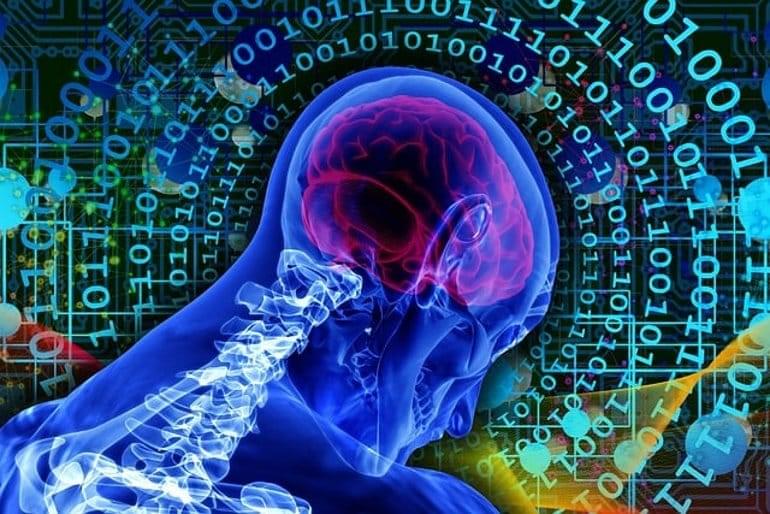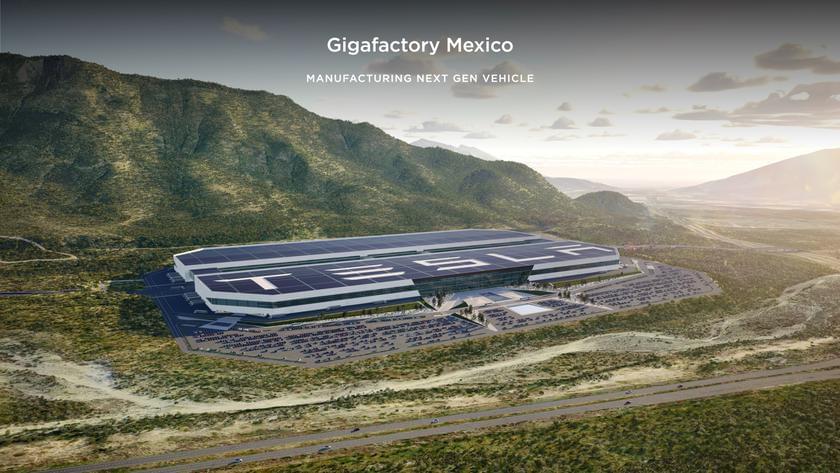OpenAI Codex is an AI that translates natural language to code.
0:00 — Introduction.
2:48 — Hello World.
13:08 — Building a game.
25:15 — Codex plugin for Microsoft Word.
OpenAI Codex is an AI that translates natural language to code.
0:00 — Introduction.
2:48 — Hello World.
13:08 — Building a game.
25:15 — Codex plugin for Microsoft Word.
The Neuroscience of Creativity, Perception, and Confirmation Bias.
Watch the newest video from Big Think: https://bigth.ink/NewVideo.
Join Big Think+ for exclusive videos: https://bigthink.com/plus/
To ensure your survival, your brain evolved to avoid one thing: uncertainty. As neuroscientist Beau Lotto points out, if your ancestors wondered for too long whether that noise was a predator or not, you wouldn’t be here right now. Our brains are geared to make fast assumptions, and questioning them in many cases quite literally equates to death. No wonder we’re so hardwired for confirmation bias. No wonder we’d rather stick to the status quo than risk the uncertainty of a better political model, a fairer financial system, or a healthier relationship pattern. But here’s the catch: as our brains evolved toward certainty, we simultaneously evolved away from creativity—that’s no coincidence; creativity starts with a question, with uncertainty, not with a cut and dried answer. To be creative, we have to unlearn millions of years of evolution. Creativity asks us to do that which is hardest: to question our assumptions, to doubt what we believe to be true. That is the only way to see differently. And if you think creativity is a chaotic and wild force, think again, says Beau Lotto. It just looks that way from the outside. The brain cannot make great leaps, it can only move linearly through mental possibilities. When a creative person forges a connection between two things that are, to your mind, so far apart, that’s a case of high-level logic. They have moved through steps that are invisible to you, perhaps because they are more open-minded and well-practiced in questioning their assumptions. Creativity, it seems, is another (highly sophisticated) form of logic. Beau Lotto is the author of Deviate: The Science of Seeing Differently.
BEAU LOTTO:
Beau Lotto is a professor of neuroscience, previously at University College London and now at the University of London, and a Visiting Scholar at New York University.
His work focuses on the biological, computational and psychological mechanisms of perception. He has conducted and presented research on human and bumblebee perception and behavior for more than 25 years, and his interest in education, business and the arts has led him into entrepreneurship and engaging the public with science.
In 2001, Beau founded the Lab of Misfits, a neuro-design studio that was resident for two years at London’s Science Museum and most recently at Viacom in New York. The lab’s experimental studio approach aims to deepen our understanding of human nature, advance personal and social well-being through research that places the public at the centre of the process of discovery, and create unique programmes of engagement that span the boundaries between people, disciplines and institutions. Originally from Seattle, with degrees from UC Berkeley and Edinburgh Medical School, he now lives in Oxford and New York.
A NASA-led research team used satellite imagery and artificial intelligence methods to map billions of discrete tree crowns down to a 50-cm scale. The images encompassed a large swath of arid northern Africa, from the Atlantic to the Red Sea. Allometric equations based on previous tree sampling allowed the researchers to convert imagery into estimates of tree wood, foliage, root size, and carbon sequestration.
The new NASA estimation, published in the journal Nature, was surprisingly low. While the typical estimation of a region’s carbon stock might rely on counting small areas and extrapolating results upwards, the NASA demonstrated technique only counts the trees that are actually there, down to the individual tree. Jules Bayala and Meine van Noordwijk published a News & Views article in the same journal commenting on the NASA team’s work.
The initial expectation of counting every scattered tree, in areas that previous models often represented by zero values, was erased by large overestimations in other areas of the earlier assessments. In previous attempts using satellites, cropland, and ground vegetation adversely affected optical images. If radar was used, topography, wetlands, and irrigated areas affected the radar backscatter, predicting higher carbon stocks than the current NASA estimations.
FULL AudioBook | GreatestAudioBooks | Science Fiction / Fantasy — Early victories by the USSR in a global nuclear war cause the United Nations government to retreat to the moon leaving behind troops and fierce autonomous robots called “Claws”, which reproduce and redesign themselves in unmanned subterranean factories. After six bloody years of conflict the Soviets call for an urgent conference and UN Major Joseph Hendricks sets out to meet them. Along the way he will discover what the Claws have been up to, and it isn’t good… — Second Variety was first published in the May 1953 edition of Space Science Fiction Magazine. (Summary by Gregg Margarite)
About the Author, Philip K. Dick:
Philip Kindred Dick (December 16, 1928 – March 2, 1982) was an American writer notable for publishing works of science fiction. Dick explored philosophical, social, and political themes in novels with plots dominated by monopolistic corporations, authoritarian governments, alternate universes, and altered states of consciousness. His work reflected his personal interest in metaphysics and theology, and often drew upon his life experiences in addressing the nature of reality, identity, drug abuse, schizophrenia, and transcendental experiences.
Born in Illinois before moving to California, Dick began publishing science fiction stories in the 1950s, initially finding little commercial success. His 1962 alternate history novel The Man in the High Castle earned Dick early acclaim, including a Hugo Award for Best Novel. He followed with science fiction novels such as Do Androids Dream of Electric Sheep? (1968) and Ubik (1969). His 1974 novel Flow My Tears, the Policeman Said won the John W. Campbell Memorial Award for best novel. Following a series of religious experiences in February–March 1974, Dick’s work engaged more explicitly with issues of theology, philosophy, and the nature of reality, as in such novels as A Scanner Darkly (1977) and VALIS (1981). A collection of his non-fiction writing on these themes was published posthumously as The Exegesis of Philip K. Dick (2011). He died in 1982 of a stroke, aged 53.
In addition to 44 published novels, Dick wrote approximately 121 short stories, most of which appeared in science fiction magazines during his lifetime. A variety of popular films based on his works have been produced, including Blade Runner (1982), Total Recall (1990), Minority Report (2002), A Scanner Darkly (2006), Paycheck (2003), Next (2007), and The Adjustment Bureau (2011). In 2005, Time magazine named Ubik one of the hundred greatest English-language novels published since 1923. [6] In 2007, Dick became the first science fiction writer to be included in The Library of America series. (Summary adapted from Wikipedia.org — Attribution: https://en.wikipedia.org/w/index.php?title=Philip_K._Dick&action=history)
► For FREE SPECIAL AUDIOBOOK OFFERS & MORE:
http://www.GreatestAudioBooks.com.
► Friend Us On FACEBOOK:
An updated look at how we are preparing to search the solar system in SETI to see whether anyone has ever stationed an alien probe in the star system including just what we might look for.
My Patreon Page:
https://www.patreon.com/johnmichaelgodier.
My Event Horizon Channel:
https://www.youtube.com/eventhorizonshow.
Music:
Short and sweet. Everyone needs a daily dose of Sabine.
Is science close to explaining everything about our universe? Physicist Sabine Hossenfelder reacts.
Up next, Physics’ greatest mystery: Michio Kaku explains the God Equation ► https://youtu.be/B1GO1HPLp7Y
In his 1996 book “The End of Science”, John Horgan argued that scientists were close to answering nearly all of the big questions about our Universe. Was he right?
The theoretical physicist Sabine Hossenfelder doesn’t think so. As she points out, the Standard Model of physics, which describes the behavior of particles and their interactions, is still incomplete as it does not include gravity. What’s more, the measurement problem in quantum mechanics remains unsolved, and understanding this could lead to significant technological advancements.

On Wednesday, OpenAI announced the availability of developer APIs for its popular ChatGPT and Whisper AI models that will let developers integrate them into their apps. An API (application programming interface) is a set of protocols that allows different computer programs to communicate with each other. In this case, app developers can extend their apps’ abilities with OpenAI technology for an ongoing fee based on usage.
OpenAI calls its new ChatGPT API model “gpt-3.5-turbo,” which supersedes its previous “best” LLM API, “text-davinci-003.” It is priced at $0.002 per 1,000 tokens (about 750 words), which OpenAI says is about 10 times cheaper than its existing GPT-3.5 models. “Through a series of system-wide optimizations, we’ve achieved 90% cost reduction for ChatGPT since December,” writes OpenAI on its API announcement page.
“The host star, TOI-5205, is just about four times the size of Jupiter, yet it has somehow managed to form a Jupiter-sized planet, which is quite surprising!” exclaimed Dr. Shubham Kanodia, who is a postdoctoral fellow in the Carnegie Earth & Planets Lab and an expert in red dwarf stars, and lead author of the study. Dr. Shubham recently discussed the discovery in an in-depth blog post, as well. Using food as an analogy, Jupiter orbiting our Sun is equivalent to a pea orbiting a grapefruit, whereas TOI-5205b orbiting its parent star would be equivalent to a pea orbiting a lemon.
The general theory of planetary formation begins with a massive, rotating disk of gas and dust encircling young stars, with gas planets initially being formed from rocky material comprising approximately 10 Earth masses. Over time, this material forms the core of the giant planet, which then accumulates large amounts of gas from the disk to produce the massive gas giants we observe today. As it turns out, the confirmation of TOI-5205b could throw this theory into disarray.
“TOI-5205b’s existence stretches what we know about the disks in which these planets are born,” explained Dr. Kanodia. “In the beginning, if there isn’t enough rocky material in the disk to form the initial core, then one cannot form a giant gas planet. And at the end, if the disk evaporates away before the massive core is formed, then one cannot form a giant gas planet. And yet TOI-5205b formed despite these guardrails. Based on our nominal current understanding of planet formation, TOI-5205b should not exist; it is a ‘forbidden’ planet.”

Summary: The human brain continues to massively outperform AI technology in a range of tasks, a new study reports. Researchers outline their plans for biocomputers and organoid intelligence systems as future improvements for artificial intelligence technology.
Source: Cortical Labs.
The time has come to create a new kind of computer, say researchers from John Hopkins University together with Dr Brett Kagan, chief scientist at Cortical Labs in Melbourne, who recently led development of the DishBrain project, in which human cells in a petri dish learnt to play Pong.

Tesla held Investor Day 2023 this week and announced the construction of a new plant in the Mexican state of Nuevo Leon. The new facility will be Tesla’s largest production facility.
Here’s What We Know
Elon Musk’s company will invest $5 billion to build the Mexican plant and create 5,000–6,000 jobs. Over time, however, the amount of investment and the number of jobs will double.